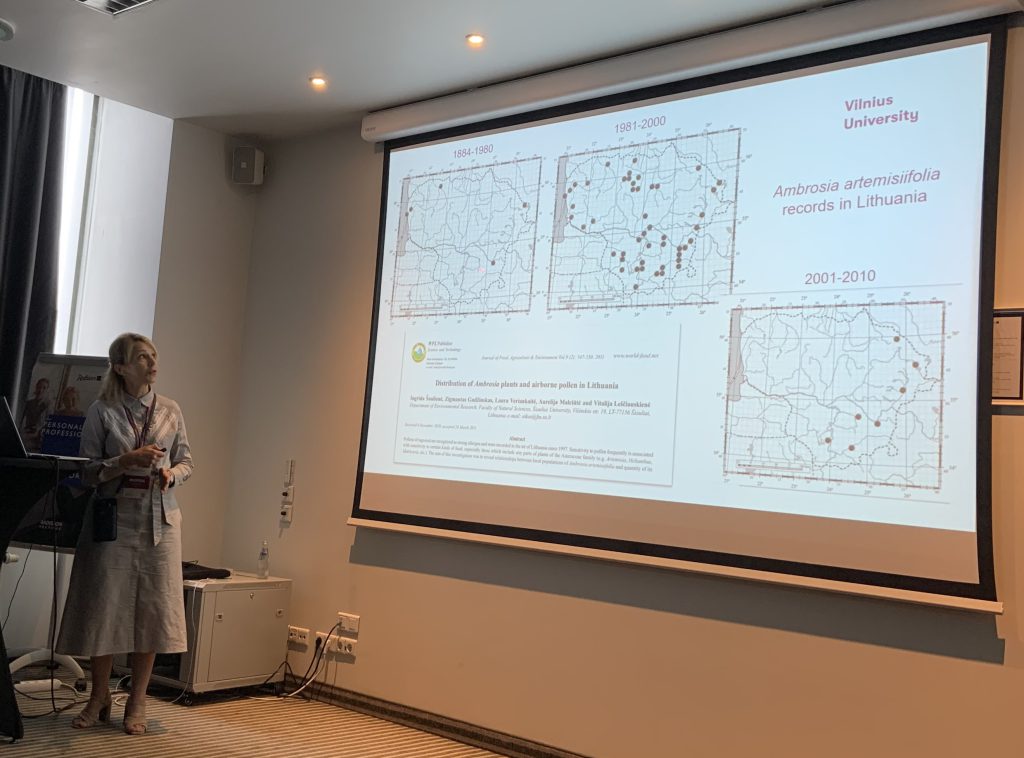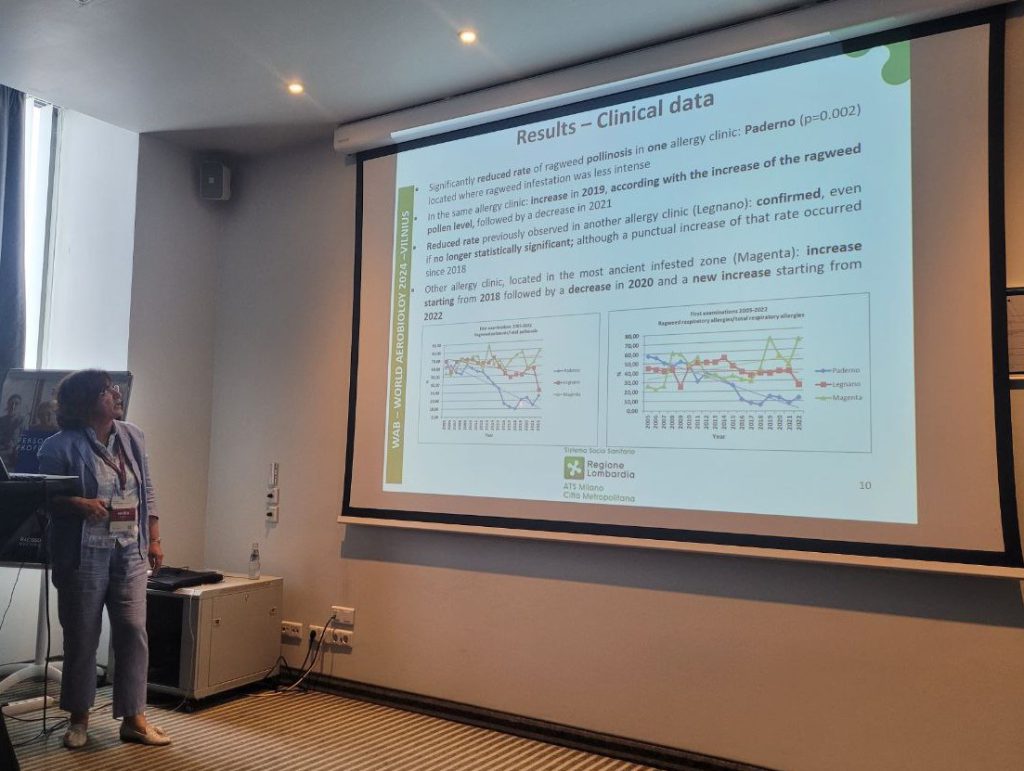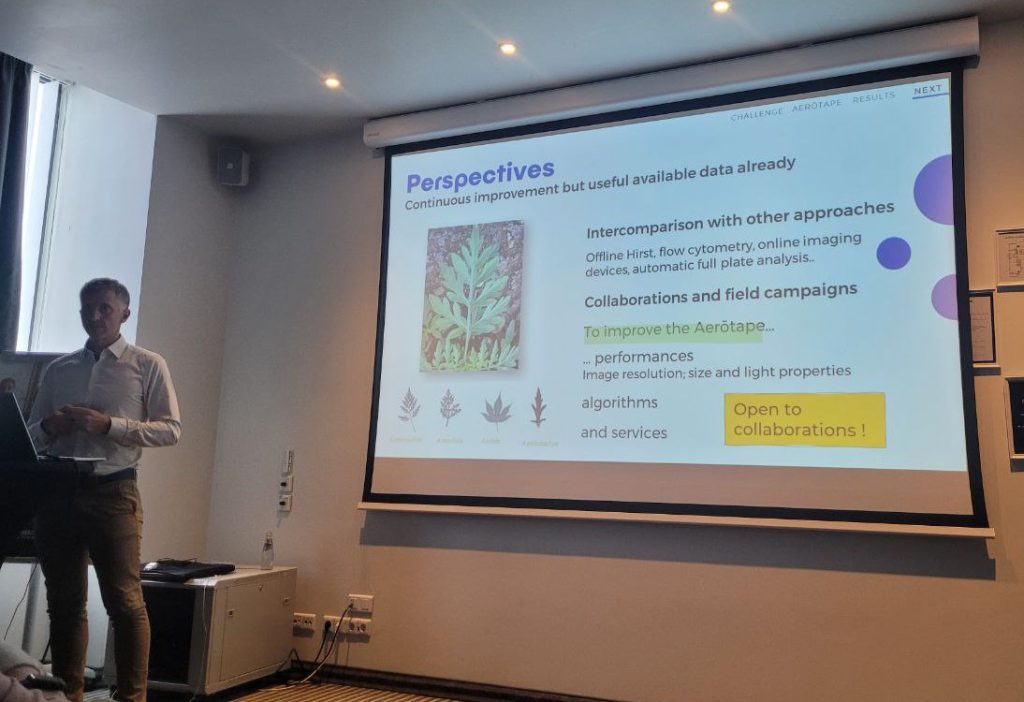IRS Elevates Ragweed Research at World Aerobiology Congress
Ragweed section, initiated by IRS was carried out within the World Aerobiology Congress. It was held in Vilnius, Lithuania from July 1-5, 2024. Ragweed-devoted section gathered 6 outstanding works which discussed ragweed ecology and health impact including those caused by pollen migration.
The study “Association of Ragweed Pollen Episodes in Lithuania with Atmospheric Circulation Patterns” by Ingrida Šaulienė, Gintautas Stankūnavičius, and Laura Šukienė found that Vilnius recorded higher frequencies and concentrations of ragweed pollen compared to other Lithuanian cities over 15 years. Utilizing volumetric Hirst pollen traps and the Hess and Brezowsky atmospheric circulation classification, they identified specific weather patterns, such as Central European Troughs, as conducive to high pollen levels. Understanding these patterns helps predict high-risk pollen episodes.

Maira Bonini’s lead study “Evolution of the Ragweed Pollen Load in the North-west Milan Area” revealed that the presence of the insect Ophraella communa, which feeds on ragweed, significantly reduced pollen levels from 2014 onwards. However, since 2018, fluctuations in pollen levels have been observed, correlating with a decline in O. communa populations, and occasional increases in ragweed allergy cases were noted.

Magdalena Widmann supported these findings by presenting the work “Historical Overview of the Presence of Common Ragweed Airborne Pollen Since 2000 in Northern Italy”. They analyzed 23 years of pollen data from 34 sites, revealing significant spatial variability with the highest concentrations in Milan. She noticed that the introduction of Ophraella communa in 2013 led to decreased pollen levels at several sites, underscoring the need for continuous monitoring and better management measures.

Aydan Acar Sahin’s research “Identification of Hotspots in the Source Regions of Ragweed Pollen Arriving in Türkiye” used aerobiological data, HYSPLIT analysis, and the DBSCAN algorithm to trace ragweed pollen to sources around the Sea of Azov and parts of Russia and Ukraine. Meteorological factors, particularly cyclonic movements in the Black Sea region, were significant in pollen transport, highlighting the need for effective management strategies in Türkiye.

Benjamin Guinot’s “Aerotape – Real-Time Detection of Ragweed Pollens by Optical Imaging” demonstrated the effectiveness of the Aerotape system, an automated instrument using optical imaging and deep learning, in monitoring ragweed pollen. Installed in Beaurepaire, France, Aerotape showed comparable results to the traditional Hirst method, offering improved real-time pollen monitoring.

Artur Górecki’s study “Local Invasion of Common Ragweed Has No Impact on Ambrosia Pollen Seasons in Kraków” found that despite an increase in local ragweed populations, pollen seasons in Kraków were not significantly impacted due to long-distance pollen transport. However, increased local exposure necessitates awareness and protective measures to prevent health issues. It could be associated with the expanded local areas of ragweed in Krakow.
These studies collectively advanced the understanding of ragweed’s ecological and health impacts, promoting better management and predictive strategies.
Victoria Rodinkova